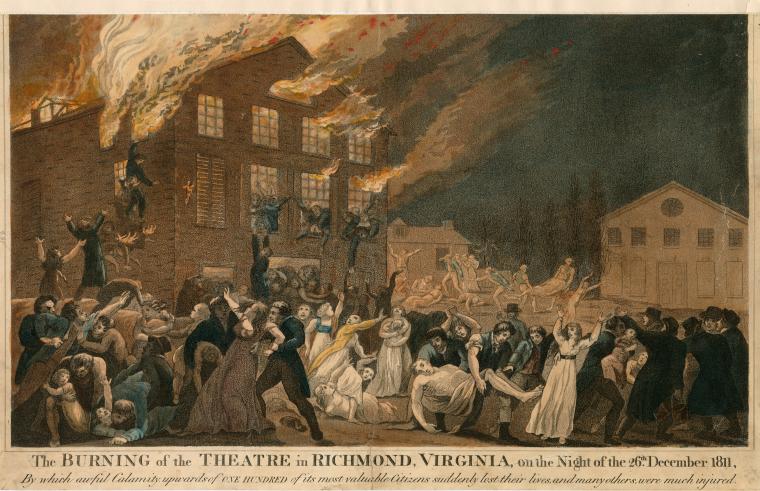I just returned from our mini-vacation over the holiday weekend, and I found it ironic that both of these news articles appeared in my inbox at the same time:
Theater fire 200 years ago claimed 72 lives – Richmond Times-Dispatch – 12/26/2011
“With a single narrow staircase to the box seats and only three exits — one behind the stage, another for the gallery and the main front door — that opened inward, the crush of bodies that sought relief proved to be just as lethal as the fire.”
Six single-screen theatres fail fire-safety audit – Times of India – 12/25/2011
“At least six single-screen cinema halls of the 14 in the city latch the exit doors from the inside and in a few cases from the outside when movies are screened which is a violation of the safety regulations, a fire-safety audit conducted for single-screen cinema halls and multiplexes has said. Some multiplexes had elevators, but the staircase essential for evacuating people was either absent or not easily located, the report added.”
I guess we still have a lot to learn about egress worldwide.
The Richmond Theater Fire of 1811 was the worst urban disaster to date in in Colonial America, which brought about the first national discussion on building public safety. There were only 3 exits for the 6o0 in attendance – one behind the stage, one for the gallery, and the main entrance. The main entrance door opened in, instead of swinging in the direction of egress. It’s also interesting to note how this fire negatively impacted the theater industry, and its affects on local churches.
Here are some resources if you’re interested in learning more about this historical tragedy:
Richmond Then and Now – newspaper accounts of the tragedy
Wikipedia – Richmond Theatre Fire
An account of the fire compiled by Gynger Cook
A Beacon That Cannot Be Hid: The Religious Impact of the Richmond Theater Fire of 1811
Theatre Safety Blog – a great resource on all aspects of theater safety
Graphic: New York Public Library
You need to login or register to bookmark/favorite this content.






Thank you for this post. Being able to share information like this with peers and end-users helps to drive home the importance of diligent Life Safety management practices